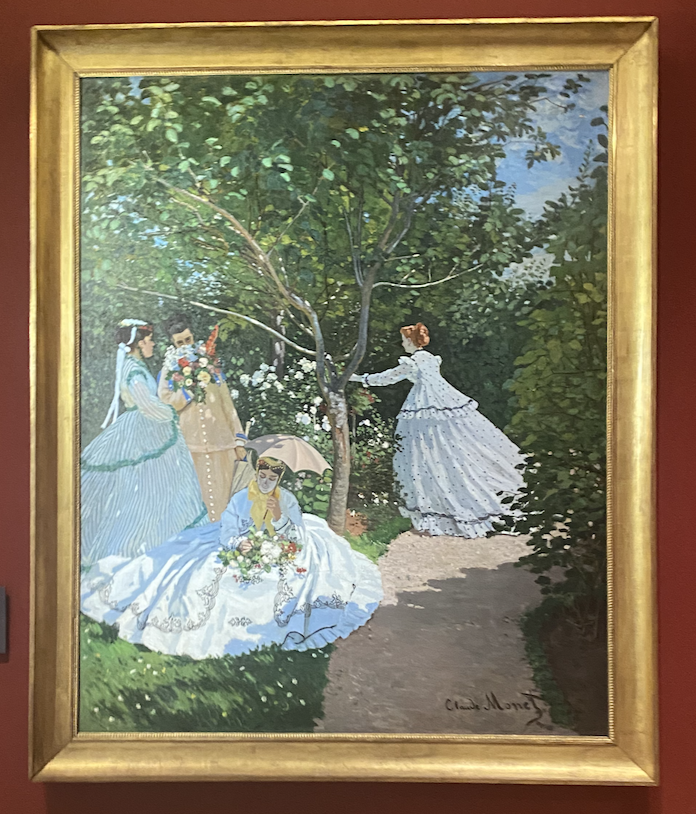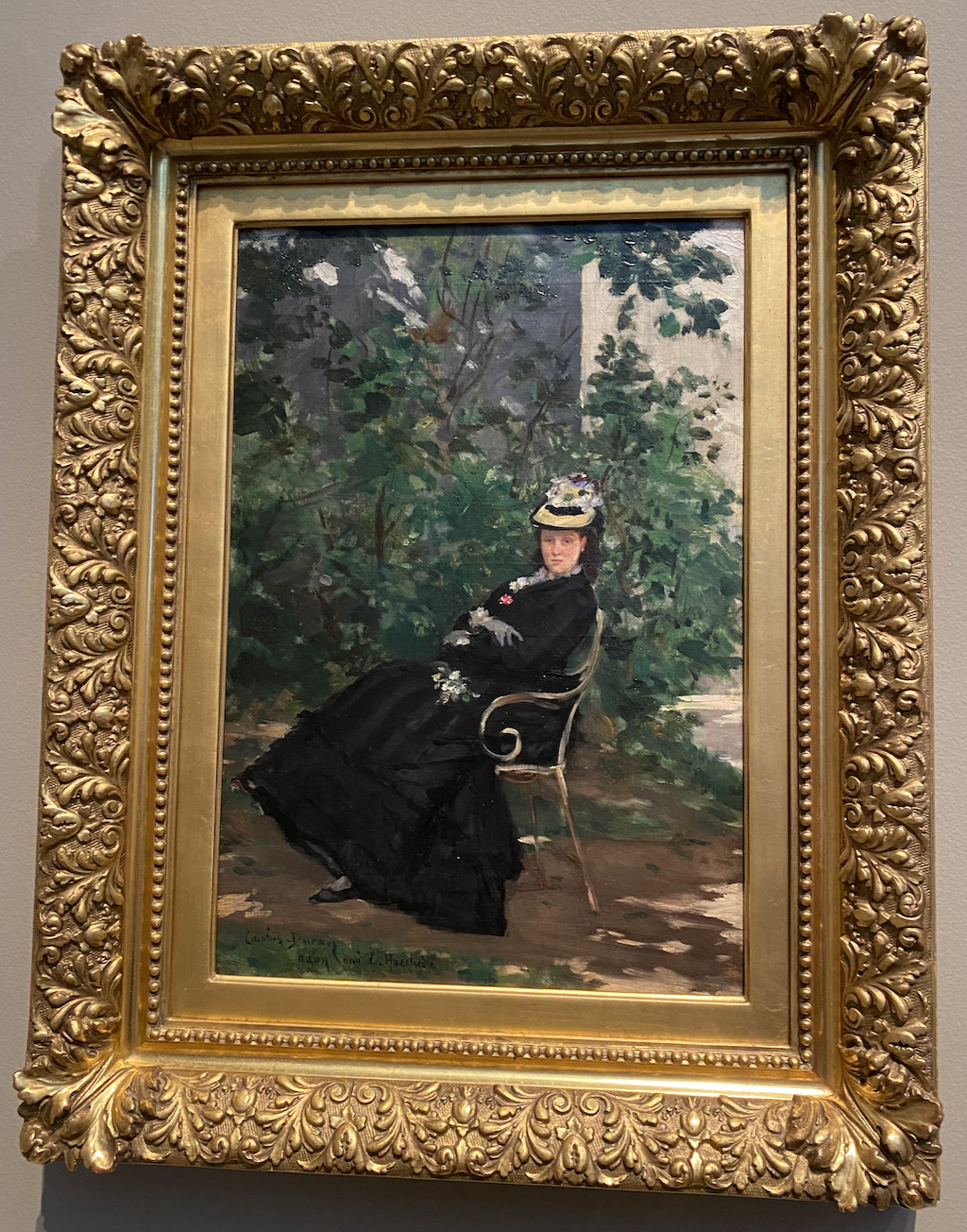Hanging within the Impressionist gallery of the Musée d'Orsay you will come across this gem. Claude Monet’s Les Dindons (the turkeys) won't have a ton of people standing in front of it like Manet’s Le Déjeuner sur l'herbe but it is one of my favorites.
In 1876 after spending time in Argenteuil, Claude Monet wanted to find some new subject matter to paint. Wealthy French businessman and avid collector Ernest Hoschede had already invited Édouard Manet out to his chateau earlier in the year and commissioned him to paint a few pieces. Manet’s pieces would never be hung and kept in his atelier until his death.
Hoscehde met Claude Monet in the Parc Monceau he offered him the same opportunity and since Monet needed the money and Manet told him it was a pretty cushy job he took him up on the offer. .
Femmes au Jardin 1866, all three women are Camille Monet
The Chateau de Rottembourg in Montgeron just 11 miles SE of Paris and located on vast grounds was where Monet would spend a few months there creating four large canvases intended to decorate the walls of the Chateau. Walking the grounds he came across a rafter of turkeys grazing in the grass on a sunny summer day and an image we can now see today. He would never complete this work but it would be shown in the 3rd Impressionist Exposition in 1877. I love this painting by Monet, maybe because it isn't a haystack or a lily pond or some of the other images he did over and over, although I do love those too. The green grass and white turkeys with a touch of pink make for such a happy cheerful painting.
However, there is so much more behind the painting. While Monet was staying at their chateau he began to have an affair with Ernest’s wife Alice. Ernest spent much of his time in Paris at his department store or hanging out at the Café Guerbois with the Impressionist. Alice had come from a wealthy family and had inherited the Chateay de Rottembourg and Ernest spent much of his time and all their money keeping up with the elite of Paris.
Ernest burned through all their money and was forced to hold two annonymus auctions for a few dozen paintings by Sisley, Monet and Pissarro that didn’t reap the rewards he had hoped. In 1877 his chateau and collection was seized and sold. 138 pieces by Renoir, Sisley, Morisot, Pissarro, Manet and Monet were sold including one very famous painting that named the movement. More on that in a bit.
Alice Hoschedé Monet by Charles Carolus Durand 1872-1878
Ernest decided to flee France without his wife and six children. Monet invited Alice and her children to move out to Vetheuil with is wife Camille and two sons. Alice was also pregenant at the time and many think it was actually with the child of Monet and not Ernest.
For years Alice hid behind the mask of a lovely lady helping nurse Camille Monet who was dying of cancer. Ever the ardent caretaker but really just waited for her rivals death. Camille took her last breath on September 5, 1879, and whole Monet was in deep mourning he picked up a canvas and painted his wife on her deathbed. The painting can also be seen in the Musée d’Orsay.
Camille Monet at her death
As the family gathered for a funeral, Alice shouted out “burn it all” Alice cleared the home of any and all memories of Camille. Every letter, photo, and painting was destroyed. In 1891 her husband died and the next year she and Monet married on July 16. 1892.
Alice died on May 19, 1911 and Monet would live until 1926 and cared for by the children of Alice.
Last year we recorded an episode all about the the little love triangle and the ladies of Monet’s life that were also often used the subject of his many paintings. Take a listen now and come back in a few days for some more history on one of the more famous pieces by Monet and it’s long sordid tale.





